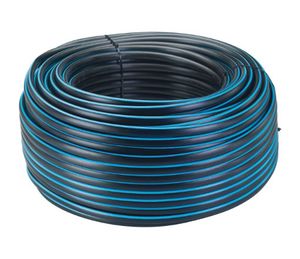Difference between revisions of "Tubing"
(Created page with "Category:Piping{{Knoppen}} <noinclude><!------------------------------------------------ * READ THIS FIRST * Only edit this page if you can improve the content. * Improper u...") |
|||
| Line 7: | Line 7: | ||
* Please start editing this page after the /noinclude | * Please start editing this page after the /noinclude | ||
* -------------------------------------------------></noinclude> | * -------------------------------------------------></noinclude> | ||
[[File:Tubing.jpg|thumb|right|Tubing]] | |||
'''Tubing''', or tube, is a long hollow cylinder used to convey | |||
fluids(liquids or gases).The terms pipe and tube are almost interchangeable, although minor distinctions exist — generally, a tube has tighter engineering requirements than a pipe. Both pipe and tube imply a level of rigidity and permanence, whereas a hose is usually portable and flexible. A tube and pipe may be specified by standard pipe size designations, e.g., nominal pipe size, or by nominal outside or inside diameter and/or wall thickness. The actual dimensions of pipe are usually not the nominal dimensions: A 1-inch pipe will not actually measure 1 inch in either outside or inside diameter, whereas many types of tubing are specified by actual inside diameter, outside diameter, or wall thickness. | |||
==Manufacture== | |||
There are three classes of manufactured tubing: seamless, as-welded or electric resistant welded (ERW), and drawn-over-mandrel (DOM). | |||
* Seamless tubing is produced via extrusion or rotary piercing. | |||
* Drawn-over-mandrel tubing is made from cold-drawn electrical-resistance-welded tube that is drawn through a die and over a mandrel to create such characteristics as dependable weld integrity, dimensional accuracy, and an excellent surface finish. | |||
==Sources== | |||
[http://en.wikipedia.org/wiki/Tubing_(material) Wikipedia Tubing] | |||
Revision as of 08:20, 2 January 2013
Tubing, or tube, is a long hollow cylinder used to convey fluids(liquids or gases).The terms pipe and tube are almost interchangeable, although minor distinctions exist — generally, a tube has tighter engineering requirements than a pipe. Both pipe and tube imply a level of rigidity and permanence, whereas a hose is usually portable and flexible. A tube and pipe may be specified by standard pipe size designations, e.g., nominal pipe size, or by nominal outside or inside diameter and/or wall thickness. The actual dimensions of pipe are usually not the nominal dimensions: A 1-inch pipe will not actually measure 1 inch in either outside or inside diameter, whereas many types of tubing are specified by actual inside diameter, outside diameter, or wall thickness.
Manufacture
There are three classes of manufactured tubing: seamless, as-welded or electric resistant welded (ERW), and drawn-over-mandrel (DOM).
- Seamless tubing is produced via extrusion or rotary piercing.
- Drawn-over-mandrel tubing is made from cold-drawn electrical-resistance-welded tube that is drawn through a die and over a mandrel to create such characteristics as dependable weld integrity, dimensional accuracy, and an excellent surface finish.
